Season 11: Introduction | 11X01: My Struggle III
“This” is more like it! Glen Morgan writes and directs an episode that is light on plot but strong on Mulder-Scully interactions, making full use of that infamous chemistry that gained such a longevity to this show!
The episode is an action-packed techno-thriller like never before in the history of the series; yet even if Morgan is not an expert at this kind of content, it suffers of none of the drawbacks of the premiere. The photography is much closer to the characteristic X-Files feel (even too dark at times, like in Morgan’s 10X4: Home Again), despite the same director of photography working on both episodes. Morgan was going for Hitchcock’s North by Northwest, although modern audiences will say it is more like 24 meets Black Mirror!
The draw of the episode is Mulder and Scully, who are together on screen for nearly the entire episode, a conscious decision on behalf of Morgan after having them apart in Home Again (and Carter in his episodes). Despite the seriousness of the themes of the central X-File, the plot here is really secondary and the multiple touches of humor give the overall episode a feel of a reunion show where we are watching more for the joy of seeing these actors after all these years rather than be troubled by the plot: an encore.
Levity abounds, from the shootout accompanied by rock music in the opening, to the ease with which they infiltrate a top security facility in the end (by flirting?). Morgan even left in several jokes that were improvised by Anderson and Duchovny — some of which could have been cut (“alien’s butt“? Mulder clearing his throat to break the silence after one of his jokes?) — increasing that impression that we are watching as much the actors as their characters.
The A-story: The Mulder & Scully show
Despite these many drawbacks, Morgan spends his episode to show us that Mulder and Scully are two fifty-year-olds who have been the most important person in each other’s life for about half their lives. This is obvious in every single aspect of their interaction of This: their coordination with almost no words spoken when the strike team attacks them; their quick understanding of each other when they have to be separated; their casual banter when eating together or traveling together or sleeping together; most importantly, how comfortable they are with each other’s presence, as they should after so many years. The episode opens and ends with us seeing them casually sleeping or resting on their couch (recalling the beginning of the romantic phase of their relationship in 7X17: all things and 7X21: Je Souhaite). Morgan gives the audience what they could expect from a revival, in an episode competently directed, and given this revival’s track record this is already enough.
They could be romantically involved or some odd version of ex-couple-turned-just-best-friends who happened to sleep while doing work at home, but they are certainly living together once more, there is no confusion or two ways around this. Although it’s “Agent Mulder’s residence“, there are references to “our home” and “our office“. The presentation of Mulder & Scully throughout this episode is very different from that of Carter — it almost feels like a jab at the decision to separate them romantically and have them so much distant for the greater part of season 10, in the same way that the line about treating William like trash was like a jab at Carter and co’s treatment of that whole storyline. While the sexual tension that was building up during years in seasons 1-7 was part of the attraction of the show for a certain share of the audience, in this revival the back and forth and mystery about the status of their relationship has damaged the dynamic and liveliness of the show instead of giving birth to something interesting.
The B-story: The X-File
This episode does not take its central plot too seriously, which makes it less of a classic than it could be if it had checked all the boxes.
Transhumanism, the position that we can use technology to transcend our mortal human coils, has seen somewhat a resurgence lately, with big Silicon Valley figures like Jeff “Amazon” Bezos and Peter “PayPal” Thiel declaring their interest. In media it is Black Mirror that comes to mind, and its episode “San Junipero“, one of those landmark episodes of television that immediately become popular culture references — Glen Morgan confessed that the reference to Black Mirror is by design. The use of your phone to gather information to build the virtual you was something explored in Caprica (2009, the modern Battlestar Galactica‘s prequel series), which was already commenting on our addiction to social media, their use being so extensive that the information gathered from there would be solid basis for predicting behavior. Suffice to say that our use of technology has not decreased since then; when Erika Price offers a way out by not using your phone, anyone’s reaction goes a long way to prove that “The System” is so over-reaching and deeply entrenched that it is nearly impossible to imagine a life without it (although the CSM managed in 9X19/20: The Truth…).
Price’s group is using the simulated personas of intelligent thinkers to advance their research on space colonization: “We’re digital slaves. They take our uploaded minds to develop science that only the elite will use to leave your world.” The second step will be the transition of human society to that simulated reality: “When we leave this planet, this life will have evolved into that.” Logistically, it would actually make sense to find a way for immortality in the form of consciousness uploaded in the digital world, which would be much easier to command machines and colonize space with: no need for oxygen, food, waste disposal, safety, so many of the costly features of antiquated biological systems — us — that presently prohibit space colonization at a large scale. Mulder sees (or pretends to see) the significance of this collective evolution towards the next phase of life: “I would just like to…to see it. It’s the closest I’ll get to seeing God. In this life, or that.”
The episode could have benefitted from a rewrite and some technical advice in the way it handles all these issues; however several problems are just necessary for making a point or advancing the plot. The idea that mere phone calls are a large part of this process to recreate something as complex as human intelligence and individual personality is preposterous. There’s no reason why the simulated person would start existing only after the real person dies. The ending twist, dark and spooky as it may be, of the existence of back-up servers with copies of everything, is something that would be quite obvious for anyone working with digital files.
Glen Morgan uses this science fictional concept for the return of at least one of the Lone Gunmen, characters that he created with James Wong back in season 1 (1X16: E.B.E.) — Langly thus becomes the only character of the show to have appeared in all seasons with the two leads and Skinner and the CSM! This is some reward for Dean Haglund, who has been an active proponent for the return of the Lone Gunmen for years, even frequently offering his own take on why they had faked their deaths (the size of the coffins in 9X15: Jump the Shark). Langly was chosen by the new Syndicate to help them in their research (his kung fu was the best!), along with other great minds (Apple founder Steve Jobs, Jurassic Park writer-turned-climate-denialist Michael Crichton, AI researcher Marvin Minsky). We meet Karah Hamby, professor of mathematics at Bethesda, who was either Langly’s intellectual soulmate or his actual girlfriend, and who frankly says “We wanted a life eternal together“; after she was assassinated they might just get that. Morgan had to find a way to bring Langly back — although it is weird to imagine him, one of the most paranoid and anti-power people one could imagine, willingly collaborating with them; there was a similar issue in Joe Harris’ comics, where the Lone Gunmen had cut a deal to collaborate with the FBI out of their secret lair under those graves.
The political situation: The X-Files in the late 2010s
The tagline is once again changed (third episode in a row! it becomes a habit!): “Accuse your enemies of that which you are guilty” (not My Struggle III‘s tagline as I previously thought) This Goebbels-like propaganda haiku is an obvious attack to the current political climate, dominated by President Trump’s tweets that use such a strategy; it does not however jive with the rest of the episode that well and feels gratuitous.
The scenes with Skinner not only act as an easy political commentary of the current situation in the USA but also as a jarring reminder of how many years have passed since The X-Files was last on the air, and how much geopolitics have changed since then. “The world is different, Mulder. […] Now there’s 17 US intelligence agencies.” (Skinner’s juxtaposition of ISIS and Al-Qaeda in there is very odd though.) US intelligence agencies and their secret financing has indeed ballooned since 9/11 and the War of Terror, started by G.W.Bush and all but continued by presidents since then, as has the privatization of areas previously serviced by public entities, the most worrying of which being private security and private military firms. Erika Price is named after Erik Prince, the founder of Blackwater, one of the biggest private security firms around, notorious for killing civilians in Iraq and rebranded since then as Academi.
Mulder and Scully are the target of a commando of “Purlieu Services, an American [private] security contractor with its headquarters in Moscow“, that has “ascendancy over the FBI” “under a classified security directive from the Executive Branch“. Trump and his Russian soap opera is referenced in everything but name here! “The Bureau’s not in good standing with the White House these days“. In a twist mixing the privatization trend, technology advances towards a paperless society, the Freedom of Information Act (also referenced in the Joe Harris comics) and society’s tendency towards complexity, it seems Purlieu also benefitted from all the hard work of Mulder and Scully all these years by being the ones that digitized the X-Files as contractors for the FBI, under lobbying of the NSA, in order for everyone to re-discover the secret programs of the government conducted in the past (“telekinesis, MK-Ultra, remote viewing“)!
So many current series have explored all these themes already. While The X-Files does not pretend to be so much in advance of its time like it used to be in the 1990s, Glen Morgan makes every effort to imagine these characters in their fifties and how they would behave in the world of today — and does a much better job at that than either My Struggle I or III, or the whole of season 10 for that matter.
Mythology elements
This episode unexpectedly proves to be a mix of a stand-alone and mythology, with the presence of Erika Price and more detail offered on that new Syndicate’s plans; it seems her character was first conceived for this episode, and Carter retro-actively included her in his own episode.
Interestingly, the urgency of Price’s plans to colonize space is defined by a threat: “Life on this Earth, all human life, most animal life, is about to be crushed. Burned to the ground.” Would that refer to the CSM’s plan to exterminate all humans with the Spartan virus, or the threat of nuclear war? Does she consider the CSM’s plan such an inevitability? Again, how are these two conspiracies’ plans incompatible?
We see some character development in Price when we learn she initially thought poorly of Mulder and is now reconsidering her position. Mulder, playing with her, offers to accept to kill his father the CSM (it is still difficult to deal with the CSM being so openly and explicitly referred to as his father!), and once more it seems like there is strong significance in it being Mulder that would kill the CSM — as if he were the only one able to achieve that (a missile couldn’t!), as if there was a mythological prophecy surrounding it. It does seem like the season is headed towards a confrontation between Mulder and the CSM, and towards Scully being offered a choice between William and Mulder.
Miscellaneous
- Why “This“?
- The X-Files has had previous episodes that have examined artificial intelligence, all of which have aged badly in their depiction of technology — 1X06: Ghost in the Machine, 5X11: Kill Switch, 7X13: First Person Shooter — and it is Kill Switch that is closest to This episode, with its central story of two lovers uploading themselves on the internet. “Kill switch” is even mentioned in This episode, when Mulder’s phone shuts down in the hands of the Russian squad leader.
- The weight of time passing is also obvious in that beautiful Arlington cemetery sequence. References to past Morgan & Wong episodes and past continuity in general abound: “I watched his funeral from 1,000 yards away, over there, through binoculars” is a direct lift of the same dialogue from 2X01: Little Green Men; Deep Throat’s first name was given as Ronald in 4X07: Musings of a Cigarette-Smoking Man; we learn here Deep Throat’s full name, Ronald Pakula, this being a reference to director Alan J. Pakula, who directed among other things All the President’s Men (1976), about the real Deep Throat and the Watergate scandal, which was such a huge influence on The X-Files’ look and feel.
- Over Ronald’s tomb, Mark Snow subtly quotes his own Deep Throat theme from 1X01: Deep Throat in a slower rendition, mixed with a piano rendition of The X-Files theme!
- The infiltration in the NSA building is reminiscent of the infiltration in the power plant at the end of 1X16: E.B.E. too.
- The Russian team mention “Price“; but how does Mulder known her full name by the end of the episode?
- Mulder & Scully haven’t talked to Skinner “in a couple weeks” and there’s a lot of mistrust between them since the events of My Struggle III. The series is going through this phase of mistrusting Skinner for yet another iteration. And after Scully’s call to him, that was some coincidence with him happening on them in the woods close to Mulder’s house.
- Lots of Ramones, of course, with their “California Sun” opening the episode and a Rivieras cover in the diner. Mulder and Scully were watching the Ramones’ concert at the San Francisco Civic Center in 1979 on their TV. Frohike’s folder is named after the Ramones song “53rd & 3rd“.
- Lots of meta references in the tombstones, like in Were-Monster, with Gillian Anderson’s children in the bus, with a Hannibal Lecter joke.
- We get the address of the Unremarkable House: “Farrs Corner, 227700 Wallis Road“. Farrs Corner is not a joke on how rural the place looks, it is a real location in Virginia, about an hour’s drive from Washington DC!
- In the digitized X-Files (apart from the file for 4X03: Home, Pennsylvania) we get a fleeting glimpse at who we know to be the guest star in Darin Morgan’s upcoming episode. I wonder what more foreshadowing of upcoming episodes there is.
- Speaking of which, the inclusion of “This Man” in the photo of the Lone Gunmen at the stat of the episode got fans going on wild theories, which are entertaining but probably amount to nothing! “This Man” appears to be a made-up urban legend that this face is often seen by people in their dreams. What can this subliminal insertion of This man in our memories of This episode mean? Could the whole episode take place in a dream? And does Mulder have access to The Lone Gunmen promotional photos?
- The QR code on Deep Throat’s “memory medallion” leads to…the website of the Magic Bullet Newsletter, the semi-in-universe promotional website of The Lone Gunmen series (2001), which is still online!
- Mulder knows phreaking and algorithms? That is a surprise! Phreaking was also referenced in the Joe Harris comics!
- The long-haired last gunman that hunts Mulder & Scully for most of the episode (shouldn’t he have died in the cemetery?) is none other than Dean Friss, camera assistant and occasional actor in most if not all of Morgan’s post-X-Files work and in season 10! Glen Morgan must have found he has an interesting face. A casting story worthy of set decorator Frank Silva’s casting as the main villain in Twin Peaks!
- Although the John Gillnitz virus that killed the Lone Gunmen in 9X15: Jump the Shark (Mulder, meaning Morgan & Wong, “was gone back then“!) was not named, Scully mentions here “They were exposed to a weaponized strain of the Marburg virus“. This is a clear reference to the virus outbreak that closed Morgan & Wong’s Millennium season 2.
- A reference to Snowden couldn’t miss from all this: “Edward Snowden documents indicated the building, code named ‘Titanpointe’, was used as an NSA mass surveillance station in a program code named ‘Blarney’. It was started in the ’70s and expanded after 9/11.” For more on this very real building, see this article. and this one.
- The simulation servers can be shut down with a flat-blade screwdriver and then lights turn red: all references to 2001: A Space Odyssey. (Oddly enough, one of the most iconic shots of the promotional videos, where Scully breathes into a numeric pad perhaps in order to find the access code, is missing in the final cut.)
Tags: xfilesrevival
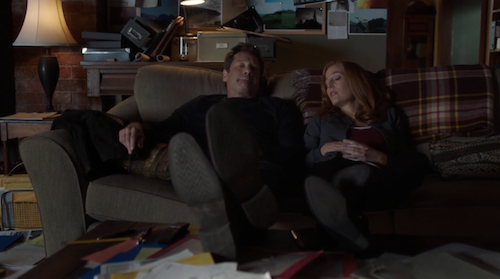
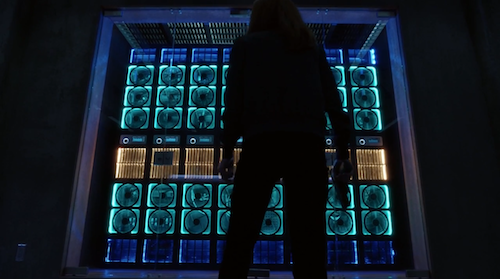
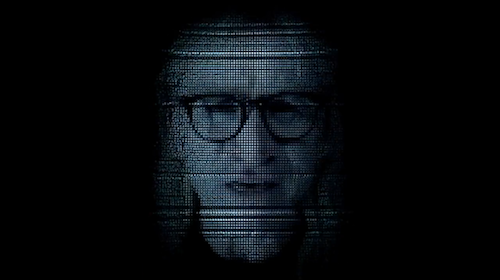
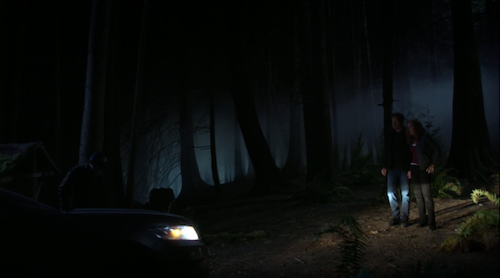
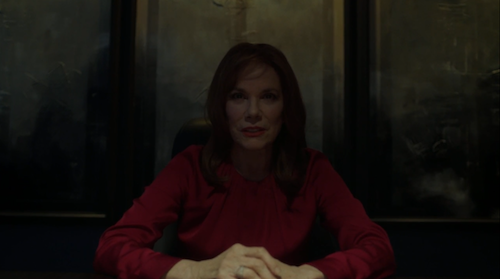
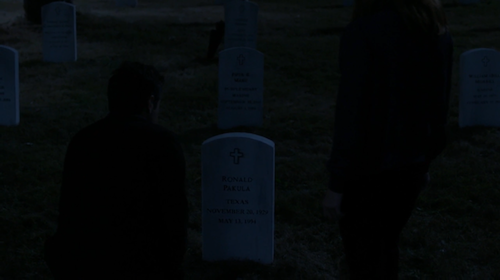
Great analysis. I enjoyed the episode very much, it smartly combines a stand alone episode with the mythology (I love episodes like “Wetwired”, “Eve” etc that do that) and it doesn’t feel forced like last season. I expect to see a few more of these episode this season (Wong’s episode, Skinner’s episode). The pace and atmosphere were much better than the premiere, I’m not a huge fan of action heroes, Tom Cruise style, M&S (not even in “Fight the Future” we didn’t have this much action and some jokes could be left out but overall it was a nice episode.
It almost feels as if you can skip season 10 completely and jump right it season 11 directly!
I really enjoyed “This,” but it wasn’t an episode of THE X-FILES as generally defined. Which is to say — the average episode of THE X-FILES has Mulder and Scully being passive investigators in a world beyond human understanding or control. “This” shows Mulder and Scully as action heroes pursuing the conspiracy to stop it rather than investigating to uncover it and they’re much more combat-proficient than ever. It’s at odds with the majority of other episodes.
One in-universe possibility: the onscreen events of “This” could be a simulation.
The simulated Langley tells Mulder and Scully that he exists in a world of perfection in which all his wants and desires are met, but the artificiality has become maddening for him while Erica Price declares that few if any of the digital personalities ever discover their artificial existence.
When Mulder and Scully are in the bar and narrowing down their investigation, the lighting around them darkens and dims to show them alone in shadow; neither of them react or seem to notice and it creates the sense that the world around them is a computer generated construct that’s experiencing a service interruption.
There are also a number of errors throughout the episode that are clearly deliberate: Mulder refers to the National Security Agency as the NSI. Byers’ headstone has a mis-spelled middle name, an error that writer/director Glen Morgan (the co-creator of the Lone Gunmen) would not make.
There is no explanation for how Langly created a cemetery based puzzle for a grave he didn’t know he’d be buried in. At one point, Mulder is pretending to be handcuffed but raises his unbound hands in full view of a guard; it goes unnoticed.
The existence of a backup, unremarked upon until the final scene, is inexplicably never raised before then.
Then there’s Mulder and Scully’s close relationship in “This.” In “My Struggle II,” Mulder didn’t bother to call Scully or answer her when heading off to confront the Smoking Man. Previous episodes had shown him saddened by their breakup and withholding his feelings about William from her.
But “This” shows Mulder and Scully falling asleep on the sofa together and Scully refers to Mulder’s house as “our home.” And then there’s Mulder and Scully as seemingly invincible action stars.
Noticeably — the conceit that the digital personalities only go online when the real person has died doesn’t make sense. There is no reason why the simulation and the real-world person could not co-exist.
However, it’s possible that the actual meaning is: the simulation only permits one instance of the digital personality at any given time to avoid conflicts and redundant processes, and the backups of the personalities are only activated if the current iteration is erased or otherwise ceases to function. Furthermore, the simulations may exist in sandboxed situations in multiple planes of digital reality.
Is any of “This” actually happening? Or is it a digital dreamworld in which the simulated Mulder and Scully were given an existence in which their fondest desire — a romantic relationship with endless cases to investigate together and forever — was granted with reality bending at the seams in order to give them what they want? The fact that William is missing and the Lone Gunmen are still dead in their perfect world indicates that their greatest wish is to be with each other without anyone else in the way — which is selfish but human.
…
Moving on. “This” is an episode where Mulder and Scully are targeted by a technological phenomenon and act as action heroes in a sci-fi adventure as they go on the run from the authorities, storm the citadel of the conspiracy using subterfuge, weapons, deception and total confidence in their ability to topple any physical threat. It’s strange because in the first nine seasons and two films, Mulder and Scully were hardly ever in combat situations and when they were, their attitude was generally to flee in terror from bees and choppers and tanks and gunmen.
They were regularly overpowered, beaten up, shot, pummelled, knocked out and tied up. “This” has Mulder and Scully sliding across floors, punching out assassins, shooting down enemies and Mulder, whose defining attribute in Seasons 1 – 7 was to regularly drop his gun, is suddenly a capable marksman whose uncharacteristic profiency in “My Struggle II” with defeating a thug has become the new normal.
Admittedly, there is a huge time gap between Seasons 9 and I WANT TO BELIEVE during which Mulder and Scully were fugitives and conceivably spent a lot of time retraining themselves for their lives on the run. But the structure of “This” is most unlike THE X-FILES: Mulder and Scully are the focus and the protagonists, and their abilities are well above what’s been previously established.
And yet, this is actually very much in tune with how THE X-FILES worked in Seasons 1 – 9. It was a different era of TV where viewers were unlikely and unable to watch every single episode. Chris Carter, as a showrunner, rarely rewrote scripts the way modern lead producers do. Instead, his attitude was to invite each individual writer to produce their scripts from writing to airing and he encouraged each individual writer to present their unique, personal vision of THE X-FILES.
For example, Chris Carter generally writes Mulder as a stalwart hero with a meaningful purpose and mission, but Darin Morgan (“Were Monster”) writes Mulder as dysfunctional and fundamentally hopeless in his goals. Chris Carter wrote aliens as unknowable, inhuman monsters of horror and madness; James Wong wrote aliens as figures of unimaginable wonder and beauty.
Vince Gilligan wrote monsters as troubled representations of the dark side of humanity which could be confronted and defeated; Chris Carter wrote monsters as beyond human understanding or control. And Chris Carter writes Mulder and Scully as passive investigators, but Glen Morgan writes them as involved action heroes. So, “This” being nothing like the other episodes of THE X-FILES is actually being quite true to THE X-FILES.
This conflicting, contradictory approach is also within Chris Carter’s own episodes: he writes monster of the week episodes that are clearly set in a universe of supernatural, magical, unknowable forces, but his alien episodes are written in a universe of scientific and technological concepts in which voodoo and ghosts don’t fit. His Season 1 – 9 myth-arc episodes are about aliens as a terrifying force outside humanity infiltrating our civilization and infecting it with savagery and monstrosity; his Season 10 – 11 myth-arc episodes are about humans who have co-opted the wonder and beauty of benign aliens to take advantage of humanity’s weaknesses and failings. Alien colonization and the Spartan Virus are two different conspiracies; Carter treats them as the same conspiracy (aside from two lines in “My Struggle III” where the conspirator says that the aliens are not going to colonize Earth as the planet’s no longer worth their while).
This is why continuity both for the myth-arc and for the characters has always been a pointless waste of time in this show. THE X-FILES was written in the 90s where episodes were written as self-directing, standalone products without much concern for what aired last week or what would air next week. This was true of both the writers and the majority of the audience and Carter has maintained this approach for Seasons 10 – 11.
Looking at “This” independently as it was meant to be seen: it’s clearly about establishing Mulder and Scully as a couple with the plot being at best an afterthought, a framework to put Mulder and Scully together in every scene with the entire episode never showing them apart at all. They are a pair who are so comfortable with each other that they fall asleep on the sofa watching television, reviewing casefiles and eating junk food. They are so familiar that even as fugitives pursued by assassins, they are cheerily at ease with each other in the woods or in parking lots or in a cafe or in a restaurant or on a bus. They are so acclimated that Scully refers to Mulder’s house as “home.” They are so warm with each other that they can both silently decide not to bother cleaning up the house and will silently let rubbish fall to the floor and head back to the sofa where they were when the episode began.
These are not coworkers or colleagues; THE X-FILES (this week) is a love story about two people who are uniquely and intimately suited to each other to the point where their marital status and professional standing are completely irrelevant because they are a team, they are a couple, they are together and they are completely infatuated with each other and their lives. God knows what they’ll be like next week, but this is what they’re like in “This.” It’s how Glen Morgan sees them. It may not be how the other writers see them.
If you look at it from a continuity minded standpoint — which is not how THE X-FILES was designed — you may see an arc. In Seasons 1 – 6, Mulder and Scully went from colleagues who trusted each other to best friends and comrades to the point where even when they’d been reassigned and the X-Files office was closed or kept from them, they would investigate cases in their spare time together to the point where “Dreamland” essentially has them as a sexless couple going to Area 51 and “How the Ghosts Stole Christmas” show them spending their holidays staking out a haunted house as civilians instead of FBI agents. In Season 7, they kissed on New Year’s Eve but it went no further and the Smoking Man remarked to Scully: “You’d die for Mulder, but you won’t allow yourself to love him.” The episode “all things” revealed that Scully had an affair with her professor in her college years that left her feeling that love was somehow a betrayal of indepedence but finally making her peace with that; the teaser and tag scene suggested that Mulder and Scully had finally consummated their relationship.
“Hollywood AD” and “Je Souhaite” showed Mulder and Scully distinctly romantic with each other, “Requiem” had Scully overjoyed to discover she was pregnant, the Season 8 finale had Scully holding her baby and Mulder kissing her and “The Truth” has them running away together. However, I WANT TO BELIEVE shows Mulder and Scully in conflict with the chemistry of a long-divorced couple reluctantly adjusted to how they’ll never be rid of each other. “My Struggle I” showed them separated with Scully calling a relationship with Mulder “quite impossible” and Mulder sadly but gently saying that he and Scully had gone their separate ways “for better or for worse” while Scully said to Mulder, “I’m always happy to see you,” establishing them as amicably broken up and maintaining constant contact.
However, their relationship starts to get closer. “Home Again” has Scully confiding in Mulder that she longs desperately to see William; “Founders Mutation” has Mulder claiming he has had to forget William but later revealing that he hasn’t at all. “Babylon” has Scully getting over the death of her mother and then this reinvigorated Scully visits Mulder at his house and they’re holding hands and walking joyfully at the end. They have only one scene together in “My Struggle II” and they have brief interaction in “My Struggle III,” but “This” would suggest that after “Babylon,” Mulder and Scully have become a couple again. Scully called Mulder’s house “our home.”
Or the next episode will resume having them living in separate dwellings and only seeing each other at the office and, retroactively, “This” was a late night work session that became movies and snacking and it was an anomaly, not a regularity. Who knows what the next episode will be? You never know what THE X-FILES is from week to week — that’s the show. It could just as easily be argued that the romantic episodes of Season 7 were simply those writers’ personal visions of the Mulder/Scully relationship which exist alongside episodes in which they’re platonically friendly or professionally amicable. It’s almost like each episode of THE X-FILES is set in a different parallel universe.
For better or for worse, THE X-FILES is not really a series as we understand it today; it’s an anthology show that features the same actors playing characters with the same names and jobs but with relationships and settings that are radically different from episode to episode and writer to writer with little to no concern for ongoing development or consistency and continuity.
“This” may be the first episode to actually silo its own episode from the rest of the series by proposing that the onscreen are all a simulation — and it may even explain why Mulder and Scully are so different from week to week, why the conspiracy was in Seasons 1- 9 about an invasion but in Season 10 became population control without alien involvement, why THE X-FILES goes back and forth from sci-fi to supernatural — these are all different versions of the simulation.
Hi this explains Season 11 so well. I too am beginning to believe that the series is some kind of dream. Mulder pointedly talks twice about parallel universes, This Man has appeared at least twice (dream symbol) inconsistent characterisation, errors, the blackout around M&S in ‘This’…has Scully been abducted AGAIN! Probably by Price. And does William (seeing his psychically connected to Scully) find Mulder rather than the other way around. Does the series end with the search for Scully? I hope not….
If we have to revert to explanations like dreams and alternate universes to explain inconsistent characterization and errors, I think we are on an odd path. Occam’s ax explanation: the writing is not as consistently good as we want it to. There is a recurring theme about dreams and perception of reality, but I don’t think it is there to justify errors.